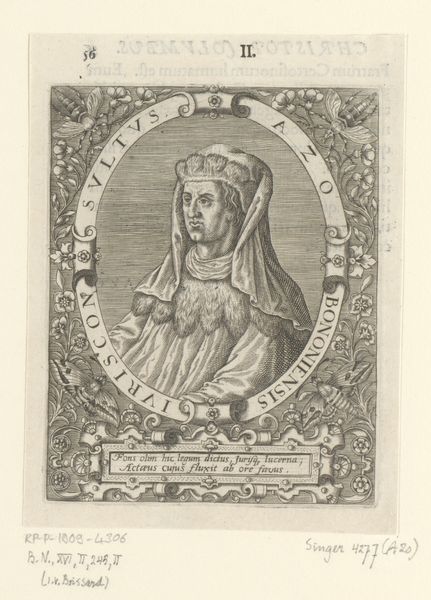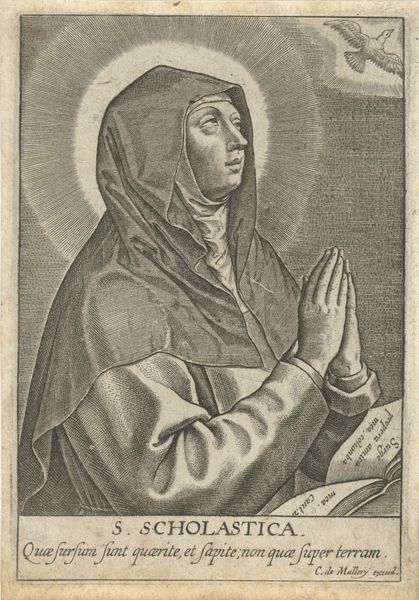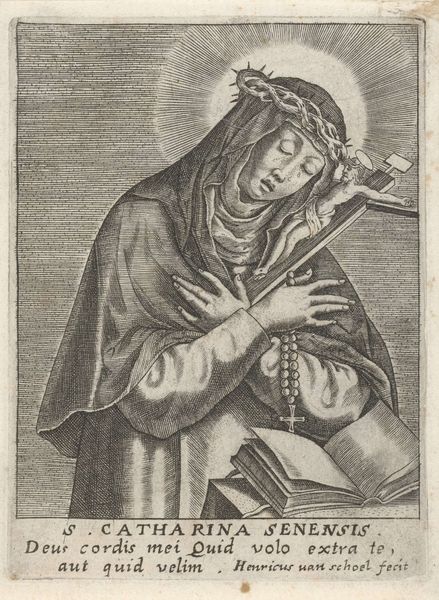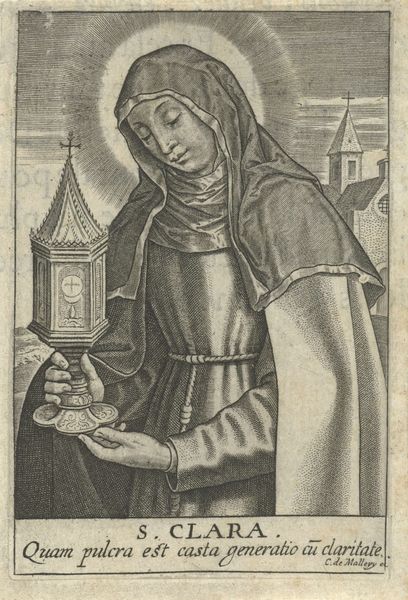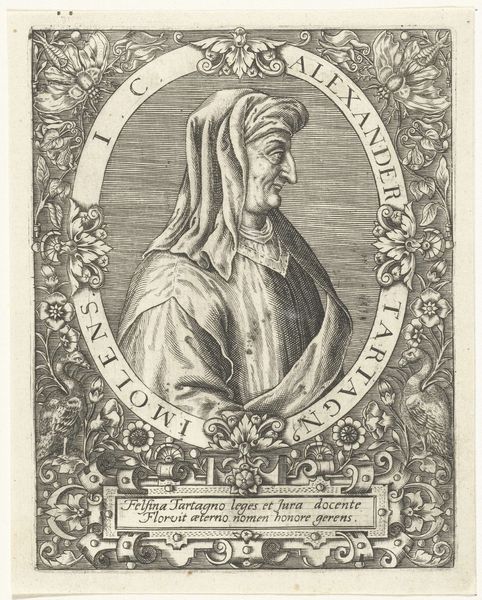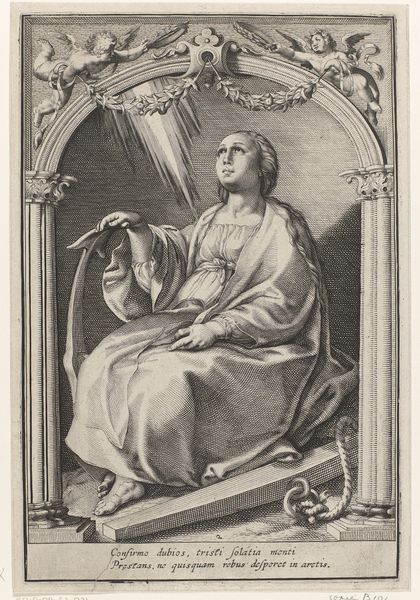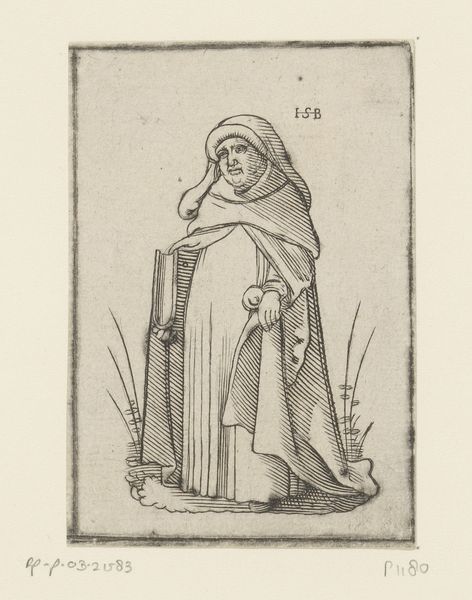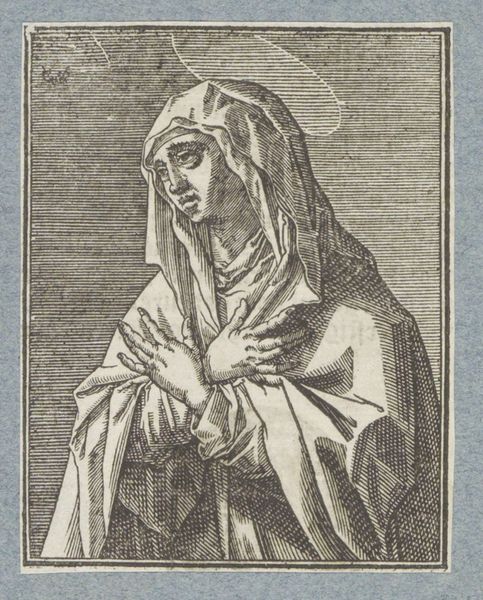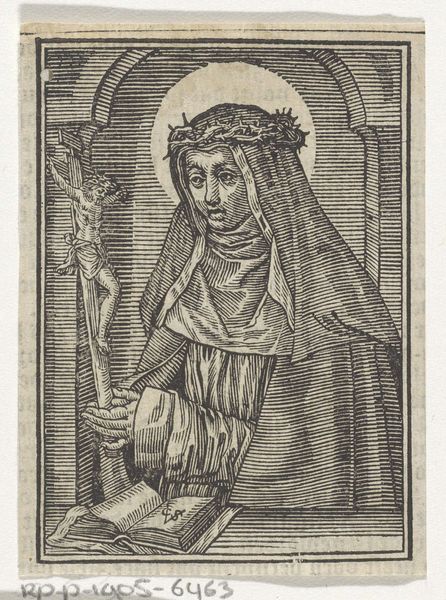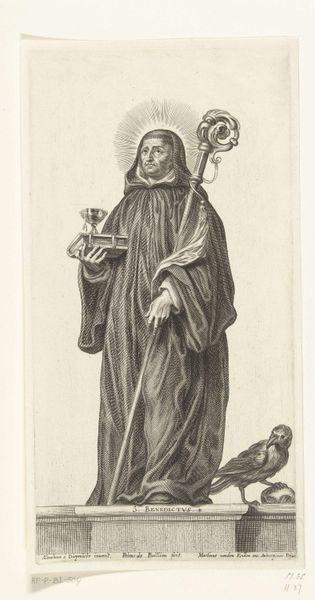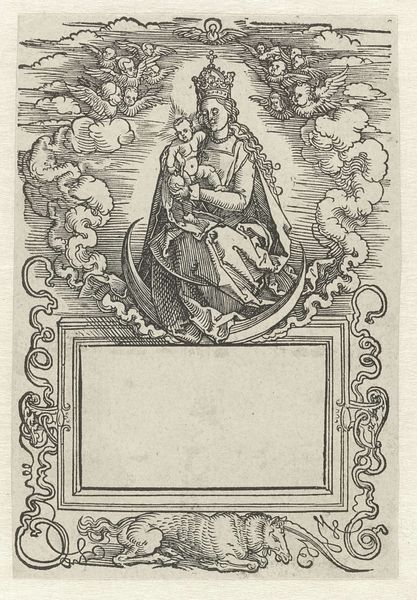
print, engraving
#
portrait
#
baroque
# print
#
engraving
Dimensions: height 203 mm, width 145 mm
Copyright: Rijks Museum: Open Domain
Editor: This is "Heilige Brigitta van Zweden," or "Saint Bridget of Sweden," a 1713 engraving by Bernard Picart, housed here at the Rijksmuseum. There’s such a serene, contemplative mood to it. What catches your eye when you look at this piece? Curator: Immediately, I see a dense layering of symbolic imagery. It isn't just a portrait of a saint; it's an active articulation of her sanctity, rendered through very specific visual cues that would have resonated profoundly with viewers in the 18th century. Notice how Bridget is framed? Editor: Yes, almost like a window or a portal. Curator: Exactly. And within that frame, to the left, a clear depiction of Christ on the Cross alludes to her visions, and to the lower-right a depiction of her receiving dictation, all within this ornate Baroque setting. Editor: Ah, so her actions in life are embedded within the art. And is that a Bishop’s Crozier to the lower left? What does that say about her? Curator: It subtly underscores her influence. She wasn't a Bishop but a Saint who provided ecclesiastical and political council, even as a woman. Picart has carefully chosen which symbols to emphasize – notice, also, the Rosary in her hands. How might that small element contribute to the overall message? Editor: I guess it ties into the devotional aspect. Even her personal items become imbued with holiness. Curator: Precisely! These symbols created meaning. Her spirituality is something actively beheld, not passively observed. These sorts of depictions not only chronicled her sainthood, but sought to actively perpetuate it. Editor: That’s incredible! I had never considered how an image could have that kind of persuasive power and carry cultural significance like that. Curator: Images are never neutral. Understanding their visual language unlocks entire worlds of cultural memory and belief.
Comments
No comments
Be the first to comment and join the conversation on the ultimate creative platform.
